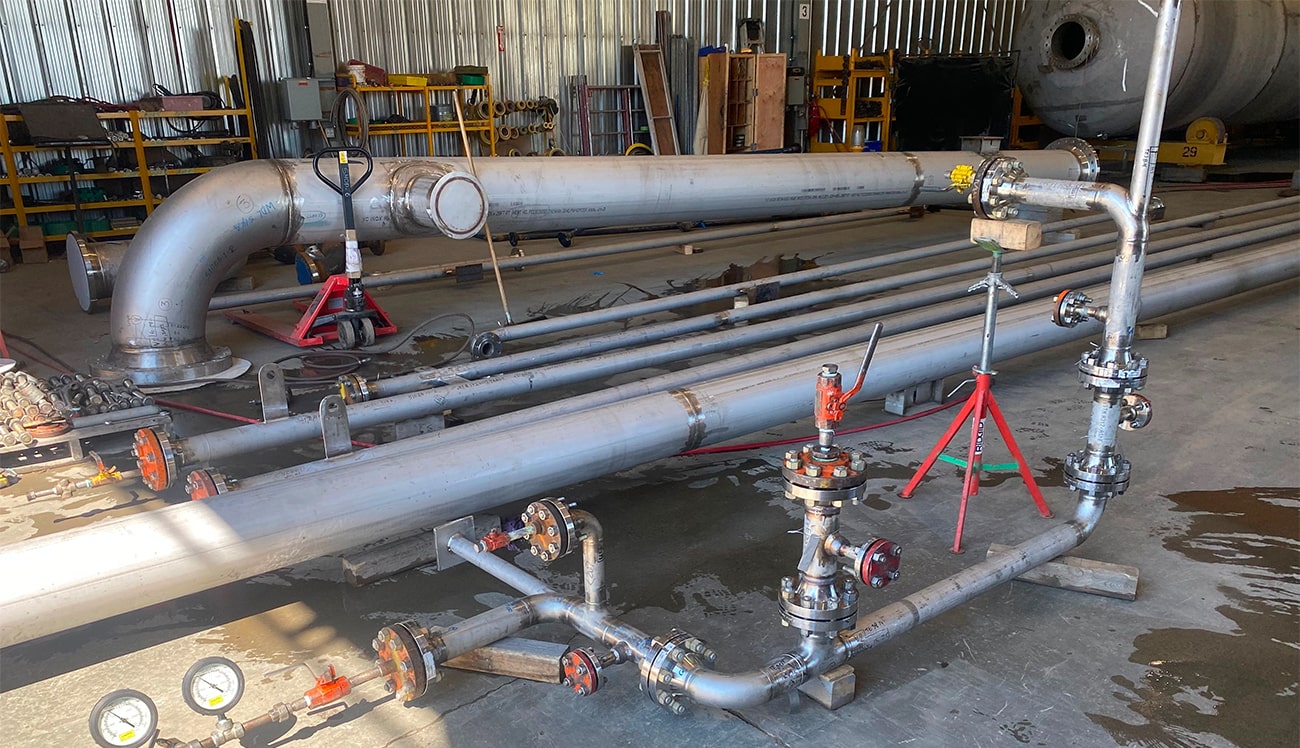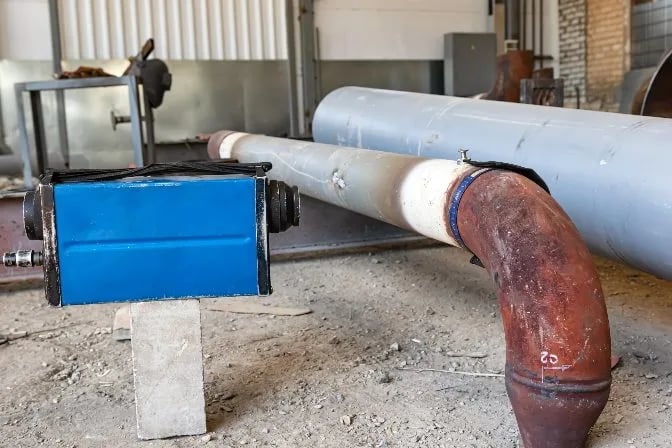Comprehensive Overview of Pipeline Welding Evaluation Treatments
Pipeline welding evaluation procedures play a vital role in assuring that welded connections fulfill rigorous market requirements and requirements. From precise pre-welding inspections to thorough post-weld evaluations, a well-defined assessment procedure is essential for keeping the architectural soundness of pipes.
Pre-welding Examination Preparations
Prior to starting the welding process, complete pre-welding assessment prep work are important to make sure the integrity and top quality of the weld joint. These prep work include a careful evaluation of the materials to be bonded, the welding equipment, and the work atmosphere. The products must be evaluated for any kind of issues, impurities, or variances that might endanger the weld. This consists of monitoring for appropriate product grades, measurements, and surface area conditions. Pipeline Welding Inspection. In addition, the welding equipment needs to be inspected to verify that it remains in excellent working problem, calibrated appropriately, and suitable for the details welding procedure. Any kind of problems with the devices should be attended to promptly to stop defects in the weld. Last but not least, the workplace must be assessed for tidiness, proper air flow, and safety and security actions to make certain a helpful setup for the welding procedure. By performing comprehensive pre-welding evaluation preparations, potential issues can be identified and settled at an early stage, bring about trustworthy and premium weld joints.
Welding Procedure Qualification
Detailed pre-welding assessment prep work lay the foundation for the vital process of Welding Treatment Certification, ensuring the stability and high quality of the weld joint. Welding Treatment Certification (WPQ) is an important action in the welding procedure that involves testing and certifying welding treatments to guarantee they meet certain standards and requirements. The WPQ procedure generally includes welding procedure requirements advancement, welding procedure certification screening, and documents of the results.
During welding treatment specification growth, important information such as the welding process, welding products, joint style, and welding parameters are specified to develop an extensive procedure. Consequently, welding procedure qualification testing is performed to confirm the recommended treatment's integrity. This screening commonly involves welding examination promo codes that go through different mechanical and non-destructive examinations to evaluate the weld's quality and adherence to the defined criteria.
In-process Weld Assessment
Throughout the welding process, in-process weld assessment plays a critical function in guaranteeing the high quality and integrity of the weld joint - Pipeline Welding Inspection. This sort of assessment includes keeping track of the welding parameters, analyzing the weld grain development, and detecting any prospective flaws or interruptions as they occur. By performing in-process weld inspections, welding operators can promptly deal with any type of concerns that may arise, thereby preventing more defects and making certain that the last weld satisfies the called for requirements
Usual methods utilized for in-process weld inspection include aesthetic inspection, liquid penetrant testing, magnetic particle screening, ultrasonic testing, and radiographic testing. On the whole, in-process weld examination is essential for maintaining the top quality and dependability of welded pipelines.
Non-destructive Screening (NDT)
Non-destructive Testing (NDT) is an important method used in pipeline welding examination to analyze the stability of weld joints without creating damages to the bonded structure. By utilizing various NDT methods, examiners can evaluate the quality try this out of welds and identify any kind of flaws or discontinuities that might jeopardize the structural strength of the pipeline. Common NDT approaches made use of in pipe welding assessment consist of Radiographic Testing (RT), Ultrasonic Testing (UT), Magnetic Fragment Checking (MPT), Liquid Penetrant Testing (LPT), and Visual Testing (VT)
RT entails using X-rays or gamma rays to create photos of the internal structure of the weld, permitting assessors to find problems such as porosity, fractures, or insufficient blend. UT makes use of high-frequency acoustic waves to detect defects underneath the surface of the weld, supplying comprehensive details concerning the dimension and click here to read place of issues. MPT and LPT are utilized to determine surface-breaking defects by applying penetrant liquids or magnetic fragments to the weld location. Furthermore, VT involves aesthetic evaluation of welds to determine any kind of visible imperfections.
Post-weld Evaluation and Paperwork


Documentation of post-weld evaluation findings is crucial for preserving high quality control documents and ensuring conformity with industry requirements and guidelines. Thorough reports ought to include details regarding the inspection approaches made use of, the location and nature of any issues found, and any type of rehabilitative actions taken - Pipeline Welding Inspection. Proper paperwork not just works as a document of the weld's high quality but likewise aids in future upkeep and evaluation processes
Final Thought

Finally, pipe welding inspection procedures play an important duty in making sure the quality and integrity of welds. From pre-welding assessments to post-weld paperwork, each action is essential in preserving the safety and efficiency of pipelines. By following established procedures and carrying out detailed examinations, prospective flaws can her response be identified and resolved before they result in pricey repair services or failures. In general, adherence to correct evaluation methods is key to the success of pipeline welding jobs.
From thorough pre-welding evaluations to detailed post-weld analyses, a well-defined assessment procedure is essential for preserving the structural sturdiness of pipelines. By performing in-process weld assessments, welding drivers can quickly deal with any issues that might arise, consequently ensuring and avoiding more defects that the last weld meets the required requirements.
Common methods used for in-process weld assessment consist of aesthetic inspection, fluid penetrant screening, magnetic fragment screening, ultrasonic screening, and radiographic screening.Non-destructive Screening (NDT) is a critical technique employed in pipeline welding inspection to assess the stability of weld joints without triggering damage to the bonded structure. Post-weld assessment includes different methods to analyze the welds for flaws, consisting of aesthetic assessment, color penetrant testing, magnetic bit screening, ultrasonic testing, and radiographic testing.
Comments on “Shield Your Financial Investment: Thorough Pipeline Welding Inspection for Comfort”